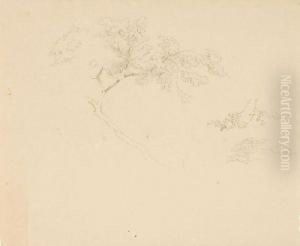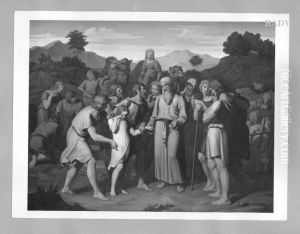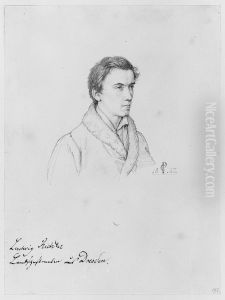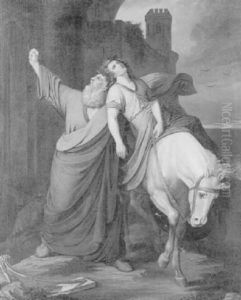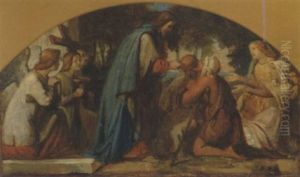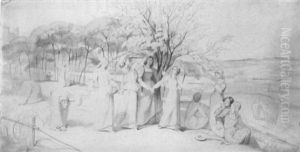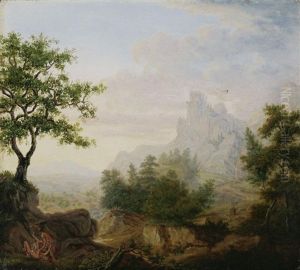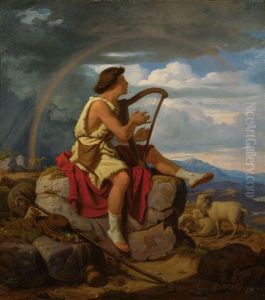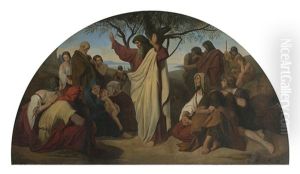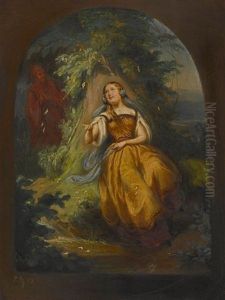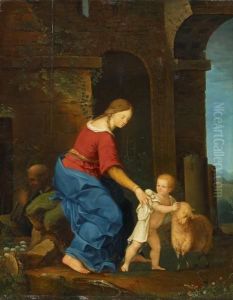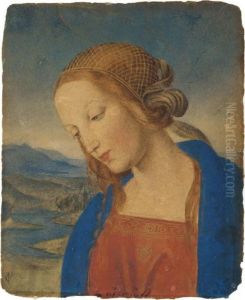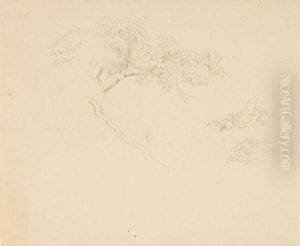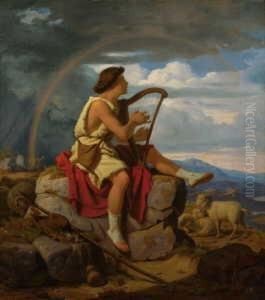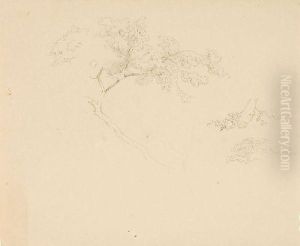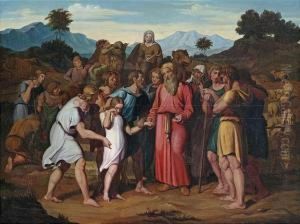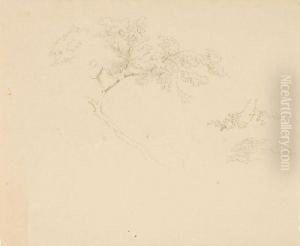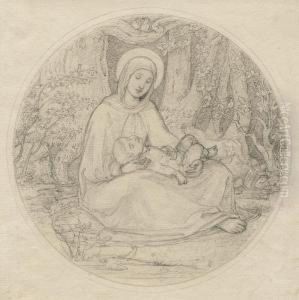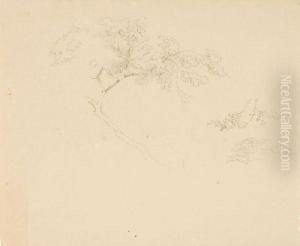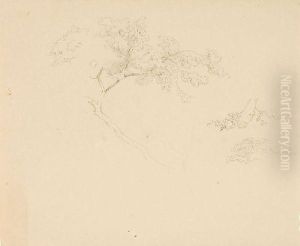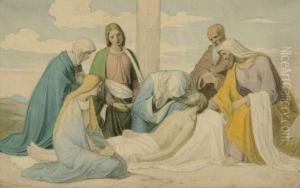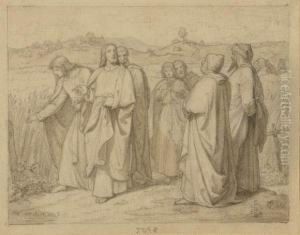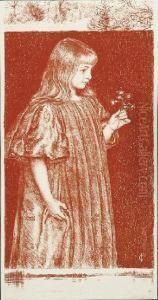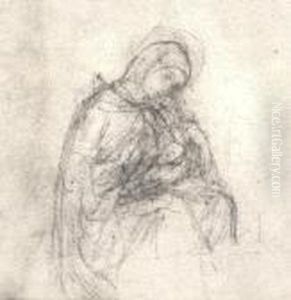Carl Gottlieb Peschel Paintings
Carl Gottlieb Peschel was a prominent German painter born on September 9, 1798, in Dresden, Germany. He was most renowned for his contributions to portrait painting and genre works. Peschel's artistic journey began under the guidance of his father, who was also an artist, before he pursued formal education at the Dresden Academy of Fine Arts. There, he was significantly influenced by the teachings of Caspar David Friedrich, a leading figure in the German Romantic movement, though Peschel would eventually develop his own distinct style.
Peschel's early career was marked by his adept skill in capturing the human form, which quickly earned him commissions from the nobility and other prominent figures of his time. His portraits were celebrated for their intricate detail, expressive character, and the ability to capture the essence of his subjects. Beyond portraiture, Peschel also excelled in genre painting, depicting scenes of everyday life with a keen eye for emotion and storytelling.
Throughout the mid-19th century, Peschel's reputation grew, and he became a respected member of the Dresden art community. He was actively involved in the city's cultural life and contributed to the development of its artistic institutions. Peschel's work during this period reflected a maturity in style, characterized by a more nuanced use of color and light, which added depth and realism to his compositions.
Despite his success, Peschel's life was not without challenges. The political and social upheavals of the era, including the Revolutions of 1848, impacted the artistic landscape of Germany and, consequently, Peschel's career. Nonetheless, he continued to produce a significant body of work, which remained influential in German art circles.
Carl Gottlieb Peschel passed away on July 23, 1879, in Dresden. His legacy lives on through his contributions to 19th-century German art, particularly in the realms of portrait and genre painting. Today, Peschel's works are housed in various museums and collections, where they continue to be appreciated for their historical importance and artistic merit. Despite not achieving the same level of fame as some of his contemporaries, Peschel's artistry and skill have ensured his place in the annals of art history.
